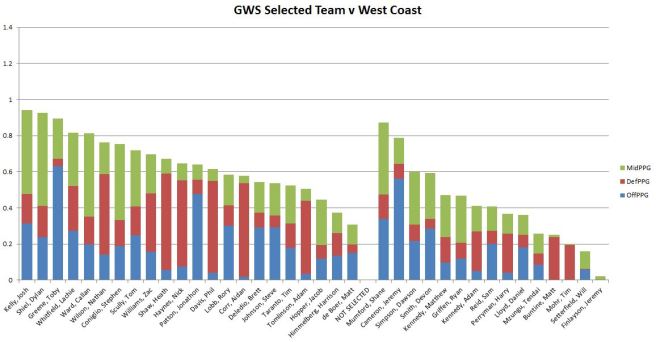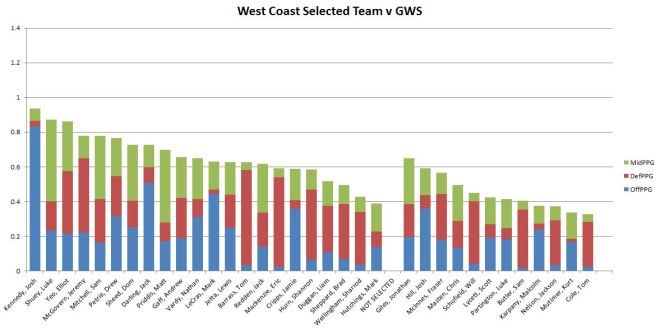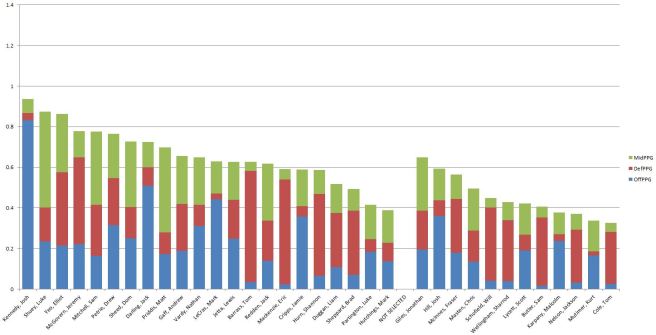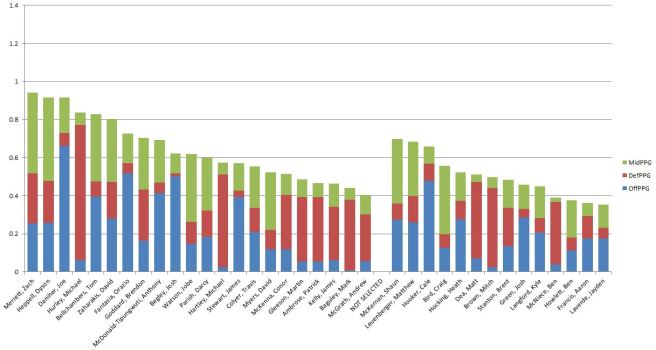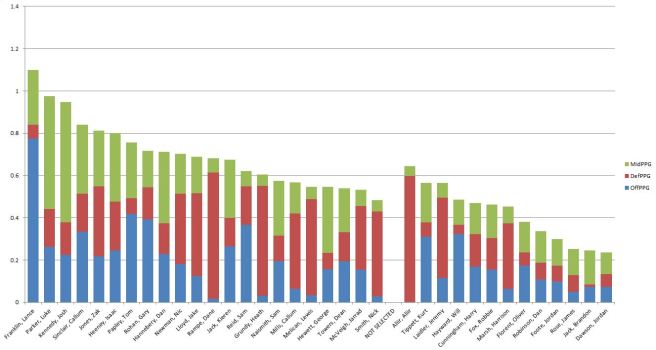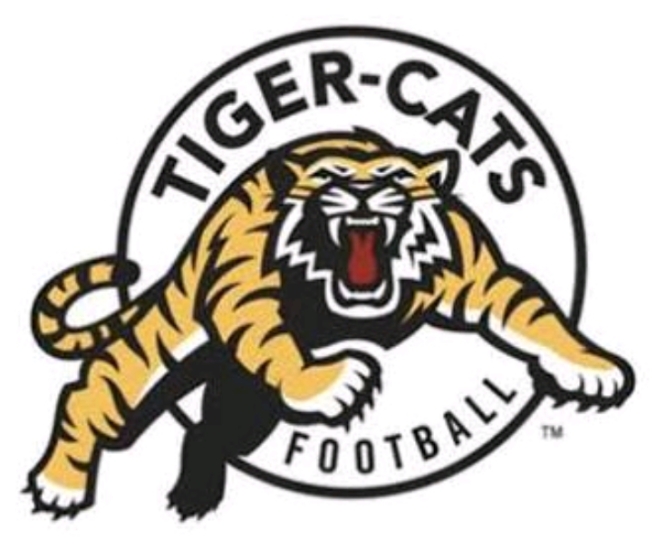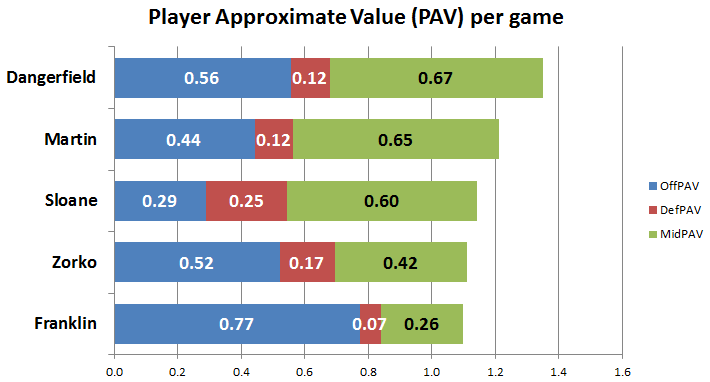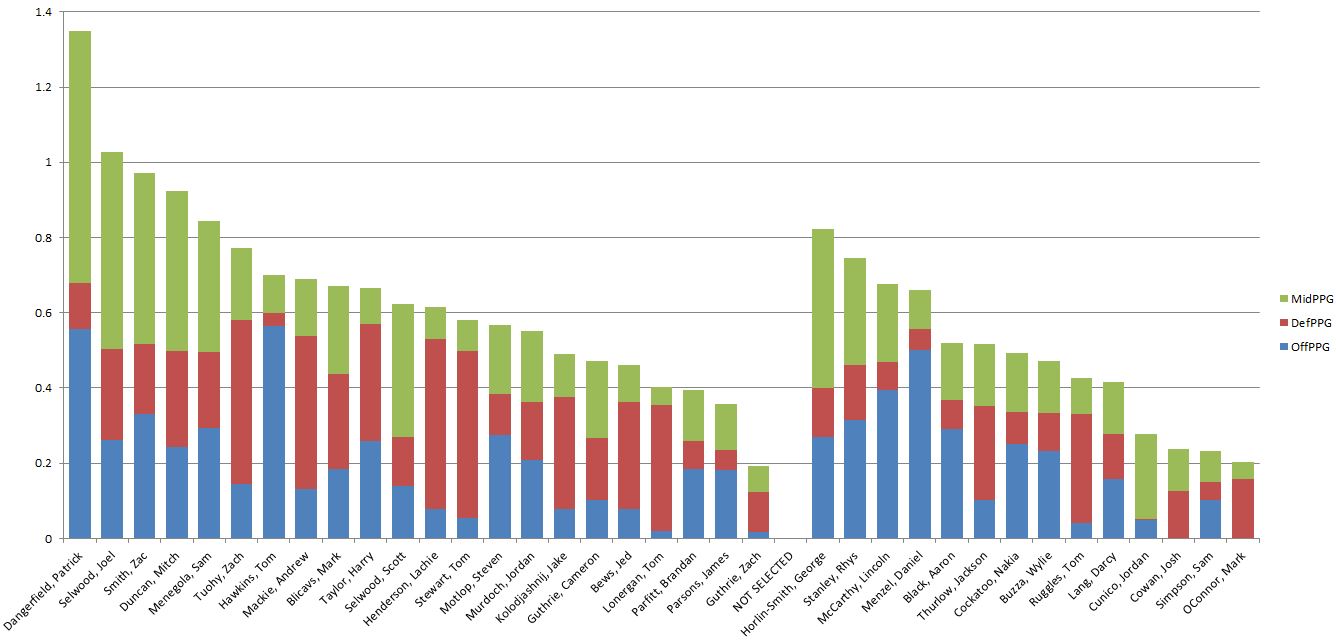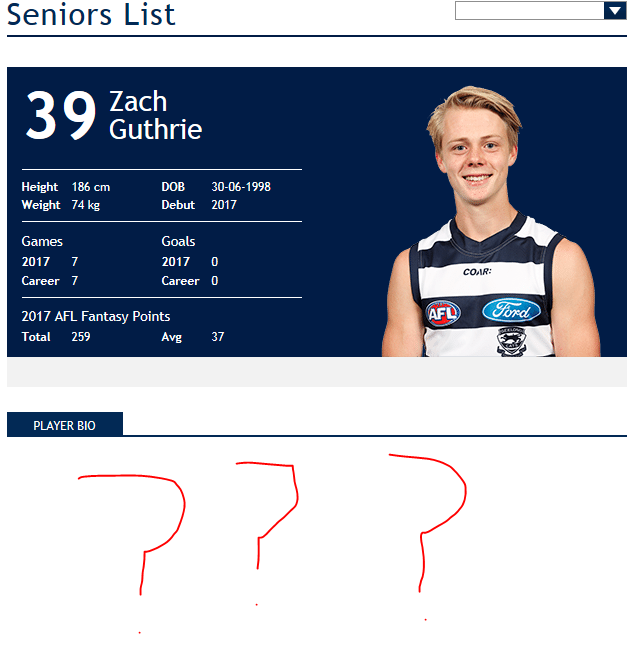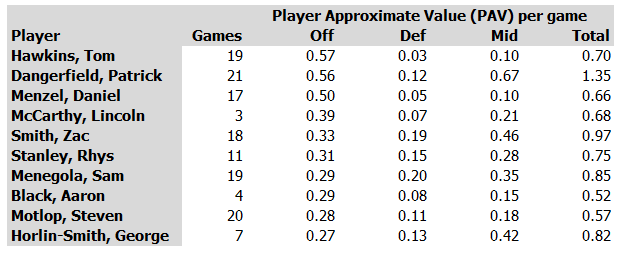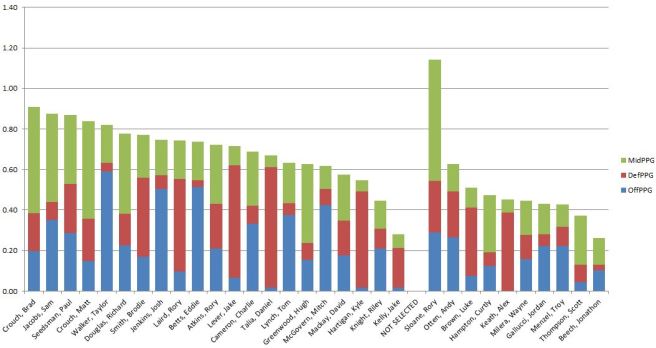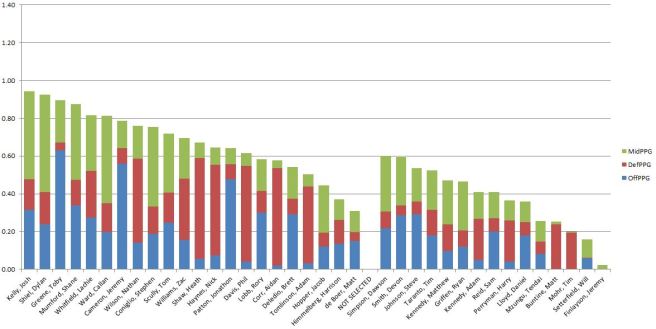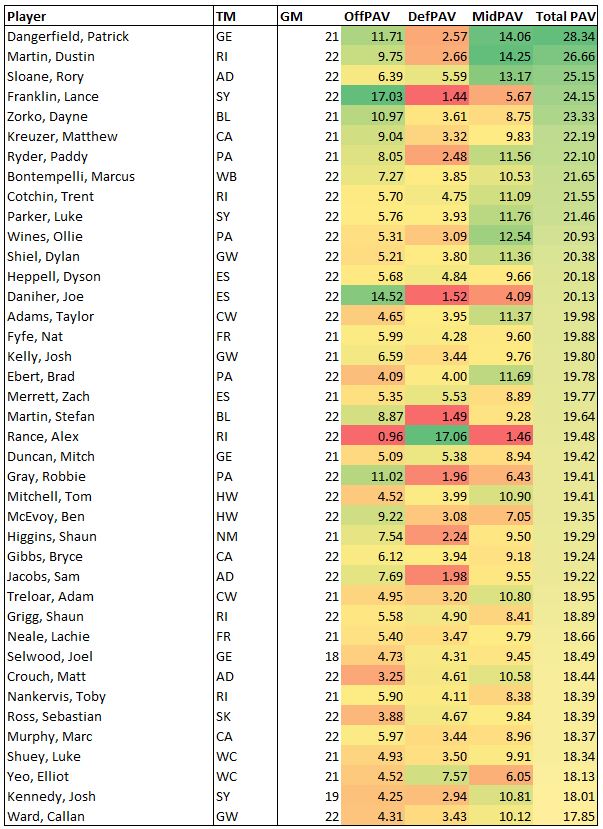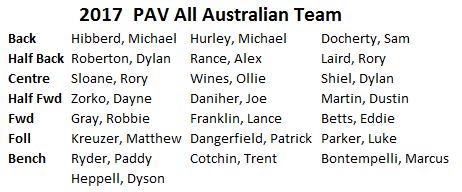All good things must come to an end, and after one of the most exciting AFL seasons in memory (if you ignore the finals) the 2017 AFL season is about to hit its climax.
But which way will the big game go? Will it be the local underdogs taking the spoils for a second year in a row? Or the interstate favourites with a bird mascot finishing the job?
Let’s find out!
Historical Lessons

On season strength, this game shapes as Adelaide’s to lose. Overall they’ve sat about 4% higher than the league average (113.3% vs 107.3%) than the Tigers, which makes the matchup about average in terms of a strength gap across the last 20 grand finals. Here’s how the eventual premiers have compared with their opponents across these strength lines each year:
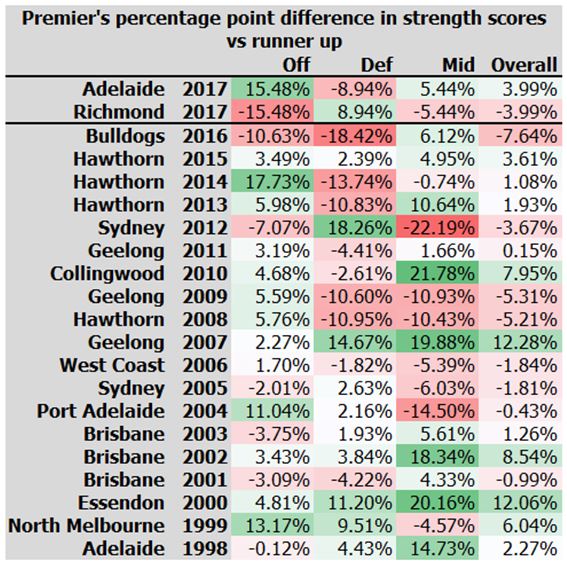
Adelaide should start favourites but grand finals typically involve two really good teams and they do tend to throw up nominal upsets. Indeed, of the eight grand finals since 1998 with larger gaps in team strength, the underdog has won three (Hawthorn in 2008, Geelong in 2009 and the Bulldogs in 2016).
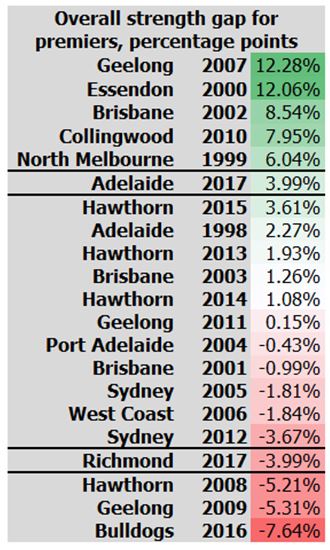
Here’s the same matchups as a graph:
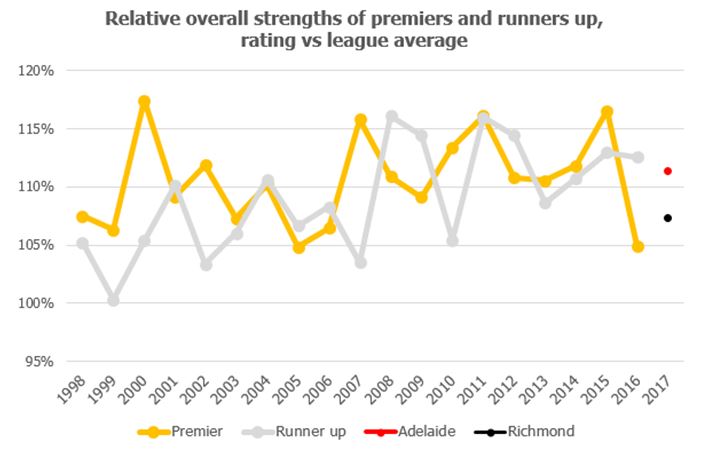
Overall, based on regular season strengths, a Richmond upset might be about as surprising as the Swans beating Hawthorn in 2012, but not as big as Hawthorn over the Cats in 2008. A Crows win, by contrast, might be about as expected as the 2015 Hawks win over West Coast. Note that we don’t factor in home ground advantage here, although it’s surely at least a small factor.
Richmond’s superior defence also gives them hope. No team has won since 1998 being inferior in all three facets (North Melbourne in 98, Melbourne in 2000, Collingwood in 2002 and Port Adelaide in 2007 were the four candidates) so Richmond being better in defence suggests a path to victory.
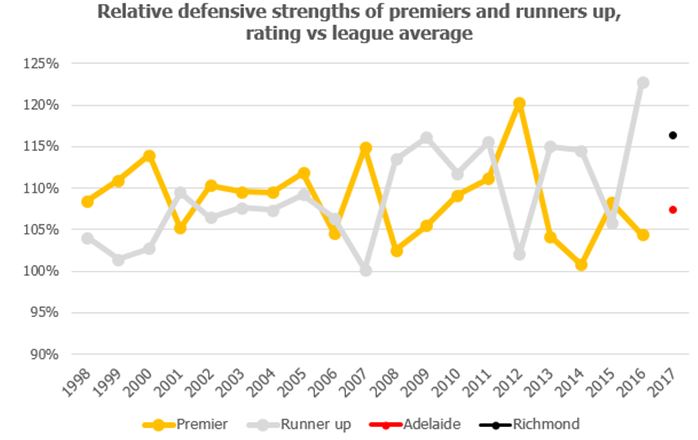
A note of caution: popular wisdom might hold that defence wins premiership but teams with a better defence have won only 10 of the last 19 premierships, compared with 13 of 19 who had a better offence:
Player Breakdown
We are using HPN’s new player value method (PAV) to evaluate the players here. We have divided the season long PAVs for each player by the number of games that each player has played – a sort of per game measure. Ordinarily we would use the pure number of PAVs over the season, without breaking down further, but the sample sizes of both teams (ie, their PAVs for the season are derived from the same number of games) allows for this extra layer of comparison.
Richmond’s Forwards v Adelaide’s Backs
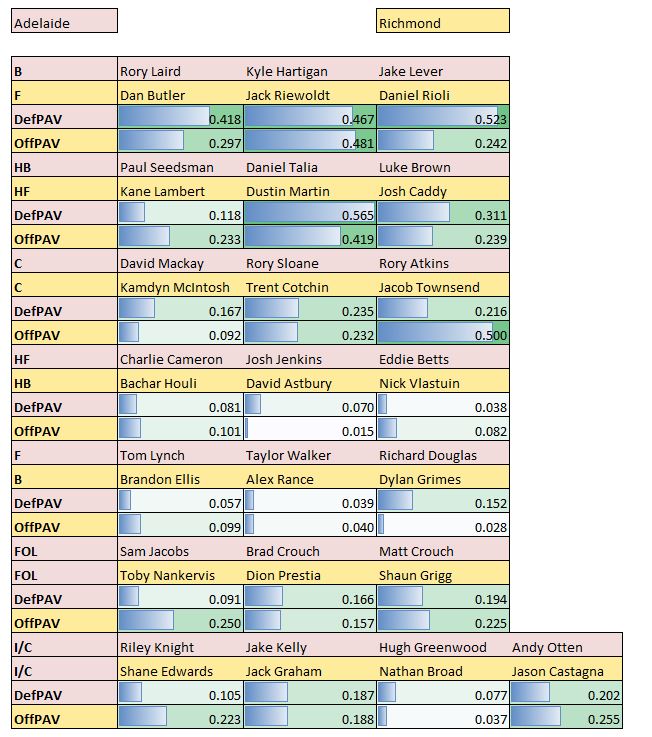
Much has been written about how the Tigers have gone small up forward this year, but little has been written about how ineffective that’s actually been for most of the season. According to HPN’s Team Ratings, Richmond finished the year as the 14th most effective attack in the competition – needing a lot of inside-50s and staunch defence in order to score enough to win. Against GWS last week, the Tigers genuinely struggled to score for 20+ minute periods in the first and second quarters – gaps that could be fatal against the hyper-potent Crows forward line.
Compounding the Tigers potential problems is that the Adelaide defence is likely the most proficient they’ll face this finals series. Even with the absence of Brodie Smith, the Crows have both the raw talent and the structural set-up to prevent opposing teams from scoring for long stretches of time.
We have pointed out in this space before that the few times Adelaide’s defence has had their colours lowered this year, it has been by smaller, more versatile attacks, but it seems like they have made some adjustments to patch the gap. The Crows’ final iteration of their defence has seven notional backmen – with a relatively even split between taller types and smaller types – and a few midfielders that can pinch hit down back if required. In their loss to Melbourne earlier this year Charlie Cameron was forced to spend a fair stretch of time defending due to Melbourne’s lack of key forwards; against Geelong in round 12, Douglas and others pitched in.
With Laird, Seedsman, Brown and Kelly all able to take smaller defenders, the Crows should now have enough bodies to cover the Tigers’ small forwards – with Lever also able to pitch in. If required, Mackay, Douglas and Atkins can float back to cover midfielders floating forward, which is how Richmond generates a bit of their attack.
Adelaide’s forwards v Richmond’s backs
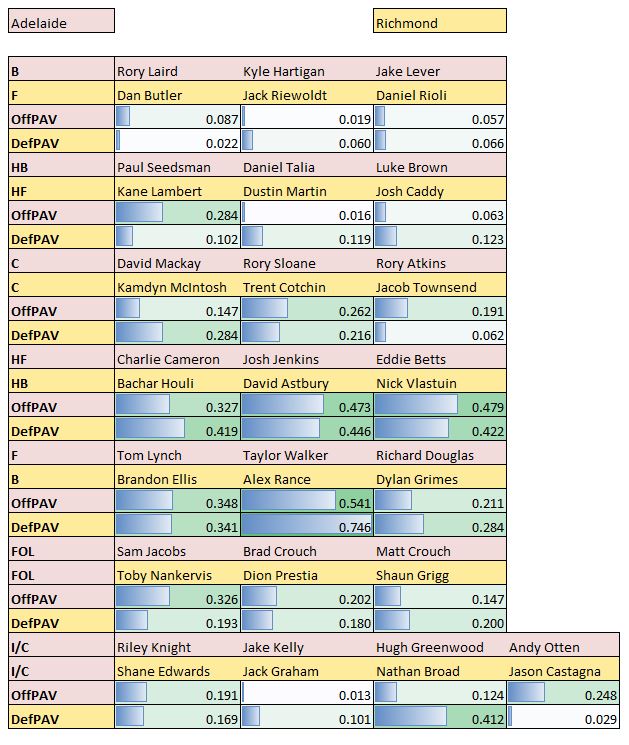
The key to winning this game for Richmond will be the work of their league-leading defence in limiting the Crows to a fairly modest total. Against the Giants, the Tigers earnt three fewer inside-50s and two less marks inside-50 but were able to limit GWS to just 1.13 points per inside 50 entry – about 45% below on the Giants’ season-long rate.
Admittedly, the Giants forward line was at about half strength (as we indicated in the semi-final preview), but it is still an impressive defensive effort.
The Crows, however, are a vastly different challenge. Comparing the Giants forwards to the Crows is like comparing frozen orange juice with juice hand-pressed by hipster artisans in a mountaintop grove while supervised by monks.
The Crows are one of the more complete attacks we have seen in the last two decades. Their points per inside-50 has been the 12th best on record since 1998, and although they’re actually not quite as efficient as they were last year in this part of the ground, as a two-year stretch this attack is second only to Hawthorn of 2014-15.
This potency means they are able to score from a variety of forward targets from practically any angle on goal. According to Figuring Footy, this year they generated by far the most shots on goal and with this level of output still manage to generate those at league-average quality. By contrast, Richmond do allow about the least shots on goal, but those are also of league-average quality.
Even the absence of Mitch “Not Jeremy” McGovern may be relatively minor – according to PAV Otten actually gets slightly more PAVs per game than McGovern, albeit with McGovern contributing more up forward.
The Midfield Battle
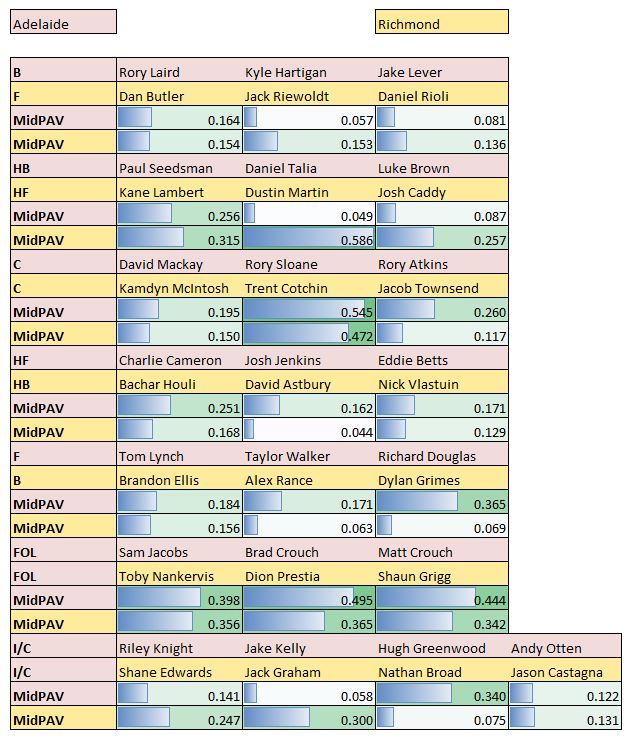
Both sides have several keen contributors through the middle, however the game’s most influential mid is slated to start at CHF. Don’t worry – Martin will surely be at the bottom of the pack, fending off players when the game will be decided.
According the HPN Team Ratings, Adelaide have a slight edge in the middle of the ground, and should be able to produce a couple more opportunities to score across the game. It’s worth noting that despite winning by 36 last week against GWS, the Tigers actually lost the inside-50 battle during the game. For the Tigers, the bigger measure of success might be how much they are able to limit the quality of Adelaide’s forays inside 50, rather than the quantity.
Overall matchups
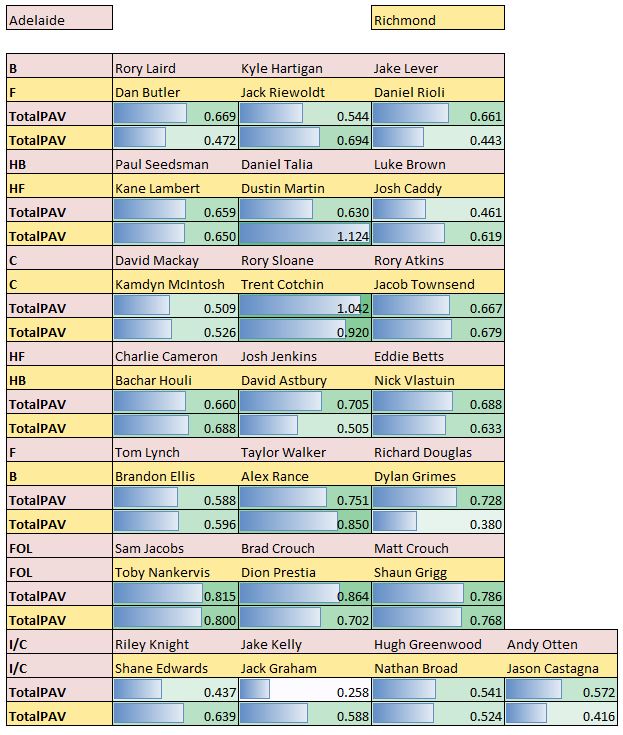
Despite the Crows being favourites according to the HPN Team Ratings, when looking at the matchups across the ground it is surprisingly even. On a player-by-player basis, all signs point to a quite even match-up.
HPN Prediction
Until recently HPN has shied away from issuing traditional predictions – instead trying to indicate paths to victory for both sides.
For Adelaide, the reciepe is simple – play like they have all year, and especially like they did in round 6 in their win over the Tigers. If all things are equal, the Crows should win.
But football isn’t played on paper, and the Tigers have a lot of variables that could break their way. If their backline can suffocate the game like in their first two finals, they might have the legs to run away late. Both the Crows and Tigers have faced the same two opponents in the finals to date, and both teams accounted for their opponents by similar margins in the end. However, Richmond led both games by a combined 10 points – as opposed to the Crows combined half time leads of 79 points. This indicates that the Tigers have been a little better in finishing off games, whilst the Crows have cruised after getting early leads.
If the Tigers can dominate when the ball hits the deck, and find a couple of non-Riewoldt, non-Martin paths to goal, Adelaide’s defence might start to panic. The crowd, expected to lean towards the Tigers, might also create a hostile atmosphere for the Crows (and perhaps more importantly, for the umpires).
The HPN prediction model indicates a Adelaide win by 11 points – a relatively small margin in the grand scheme of things, and these experimental projections have pretty much all been wild underestimates in a finals series full of blowouts. Richmond have improved as the finals have progressed, and closed the predicted margin by 3 points over what would have been predicted at the end of the Home and Away season.
If last year’s grand final taught us anything, it’s that almost anything can happen on Grand Final day.












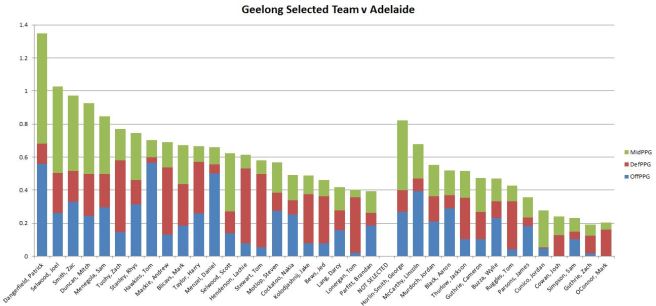
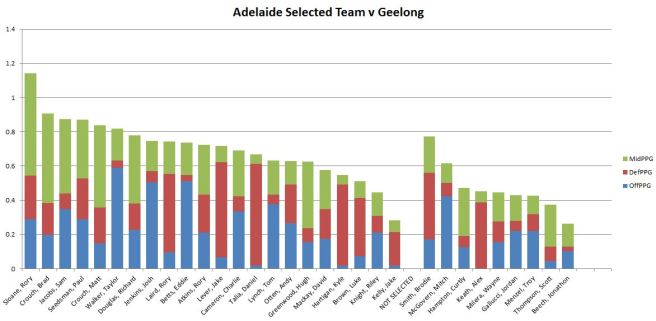


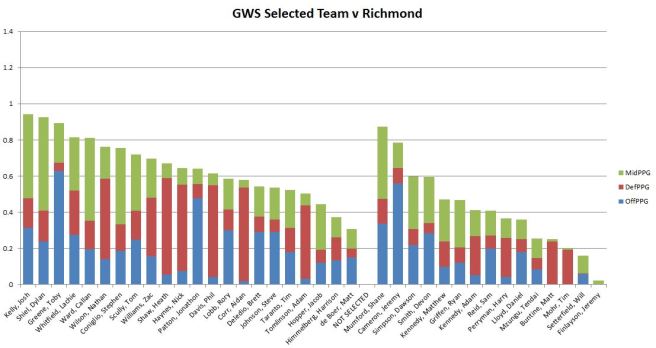

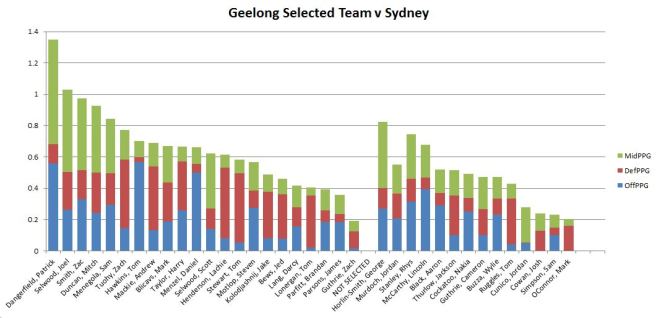
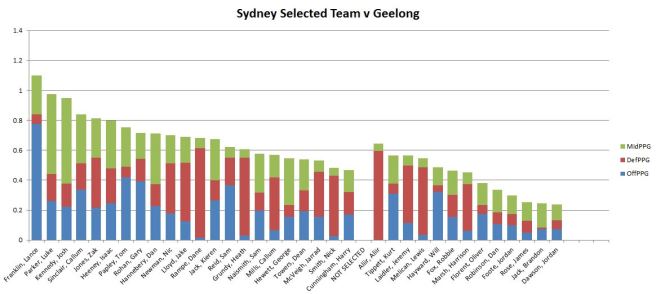
 Like the Swans-Cats game above, the underdog here (in this case the Eagles) has minor edges in two statistical categories (offensive and defensive efficiency), whilst significantly trailing in the battle in the middle. For the Eagles, the equation is similar to last week – they have to minimise the damage in the middle, or exploit missing opposition players, to have a real shot.
Like the Swans-Cats game above, the underdog here (in this case the Eagles) has minor edges in two statistical categories (offensive and defensive efficiency), whilst significantly trailing in the battle in the middle. For the Eagles, the equation is similar to last week – they have to minimise the damage in the middle, or exploit missing opposition players, to have a real shot.